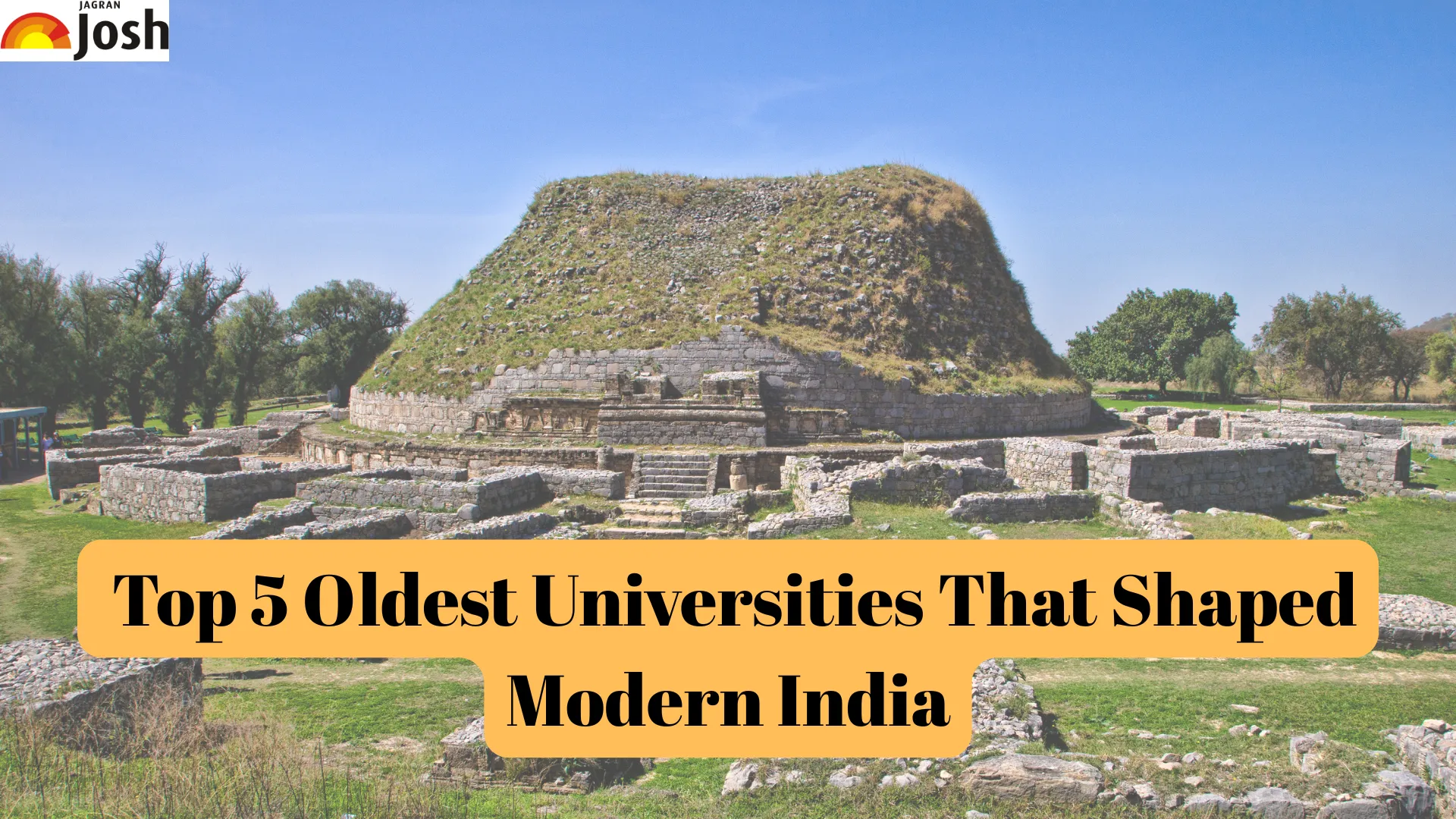Oldest Universities In India: Some of the oldest and greatest educational institutions in the world have historically been found in the Indian subcontinent; many of these institutions established the groundwork for numerous branches of knowledge and culture. In addition to the well-known Nalanda University, the subcontinent was home to a number of other historic universities that have mostly collapsed into ruin but made substantial contributions to science, philosophy, and education. Among the five noteworthy instances is Takshashila (Taxila), which is sometimes regarded as one of the oldest colleges. It was established at least in the 5th century BCE and is well-known for its secular studies in statecraft and medicine, with names like Chanakya and Panini.
After that, there is Vikramashila, a significant Buddhist educational institution that was founded in the eighth century during the Pala dynasty and focused on Tantric Buddhism and philosophy. Gujarat's Valabhi was a major hub forinayana Buddhism and other secular disciplines from the 7th to the 12th centuries. Odantapuri was another important institution that was founded in Bihar in the eighth century and was a major forerunner of Vikramashila.
Last but not least, Jagaddala, which was founded in Bengal in the eleventh century, was among the final significant Buddhist educational institutions before it began to fall. The subcontinent has a rich history as a global center of education, and these institutions, in spite of their demise as a result of invasions and political unrest, nevertheless have an impact on contemporary study and our comprehension of early educational traditions.
List Of Top 5 Ancient Indian Universities That Shaped Global Knowledge

The Indian subcontinent has long been a significant global hub for education, with a number of colleges that drew students from all over the world. Five of the most prominent ancient Indian universities, excluding Nalanda, are as follows:
| University | Location | Period (Approximate) | Key Academic Focus |
| 1. Takshashila (Taxila) | Ancient Gandhara (Present-day Pakistan) | 5th Century BCE – 5th Century CE | Secular studies, Medicine, Grammar (Pāṇini), Politics, and Statecraft (Chanakya). |
| 2. Vikramashila | Bihar, India | 8th Century CE – 12th Century CE | Tantric Buddhism, Philosophy, Logic, and advanced Buddhist theological studies. |
| 3. Valabhi | Gujarat, India | 7th Century CE – 12th Century CE | Hinayana Buddhism, Law (Nyaya), Politics, Economics, and secular subjects. |
| 4. Odantapuri | Bihar, India | 8th Century CE – 12th Century CE | Buddhist studies, served as a center for the Vajrayana school, and a monastic university. |
| 5. Jagaddala | Bengal (Modern Bangladesh) | 11th Century CE – 13th Century CE | One of the last great centers of Mahayana and Vajrayana Buddhist learning in India. |
Also Check:
-
BCA Subjects 2025: Download Semester-Wise Syllabus List Here
-
10 College Degrees Losing Value, According to Harvard – Better Alternatives to Study
-
MBA Syllabus 2025: Semester-Wise Subjects, Specializations, and Course Structure
-
Scored 450 marks in NEET 2025? Top Colleges in India for MBBS
-
BBA 1st Year Subjects 2025: Semester-Wise Subjects List & Syllabus
-
Chevening Scholarship 2026: Eligibility, Benefits, Application Process & Important Details
How have these universities worked to Shaped Global Knowledge?
- Pioneering Scholarly Exchange: By drawing academics from all over Asia and the world, they made the Indian subcontinent the world's leading center for cutting-edge research and education.
- Enhancing Science and Mathematics: Institutions such as Takshashila created and disseminated fundamental ideas in classical medicine (Ayurveda) and mathematics (such as the decimal system) to other societies.
- Buddhist Thought Dissemination: Monastic universities played a significant role in the preservation and dissemination of many schools of Buddhist logic and philosophy, having a significant cultural impact throughout East and Southeast Asia.
- Creating Institutional Models: Their centralized libraries and demanding academic systems were early models of university administration that impacted educational practices globally.
- Creating Foundational Texts: They created and preserved a number of important works that are still significant to contemporary research in the fields of philosophy, statecraft, and language (Pāṇini, Chanakya).
- Promoting Interdisciplinary Debate: These institutions placed a strong emphasis on rigorous, critical scholarship and debate across a range of topics, which fueled methodological and intellectual breakthroughs around the world.
Also Read:
Top IIT Colleges That Offer Data Science Courses to Learn Online in 2025
Best Free AI Courses for Beginners in 2025
Best Pharmacy Colleges in India 2025 After 12th Offering High Job Placement
To stay updated on current trends, join the Jagran Josh Telegram Community!
